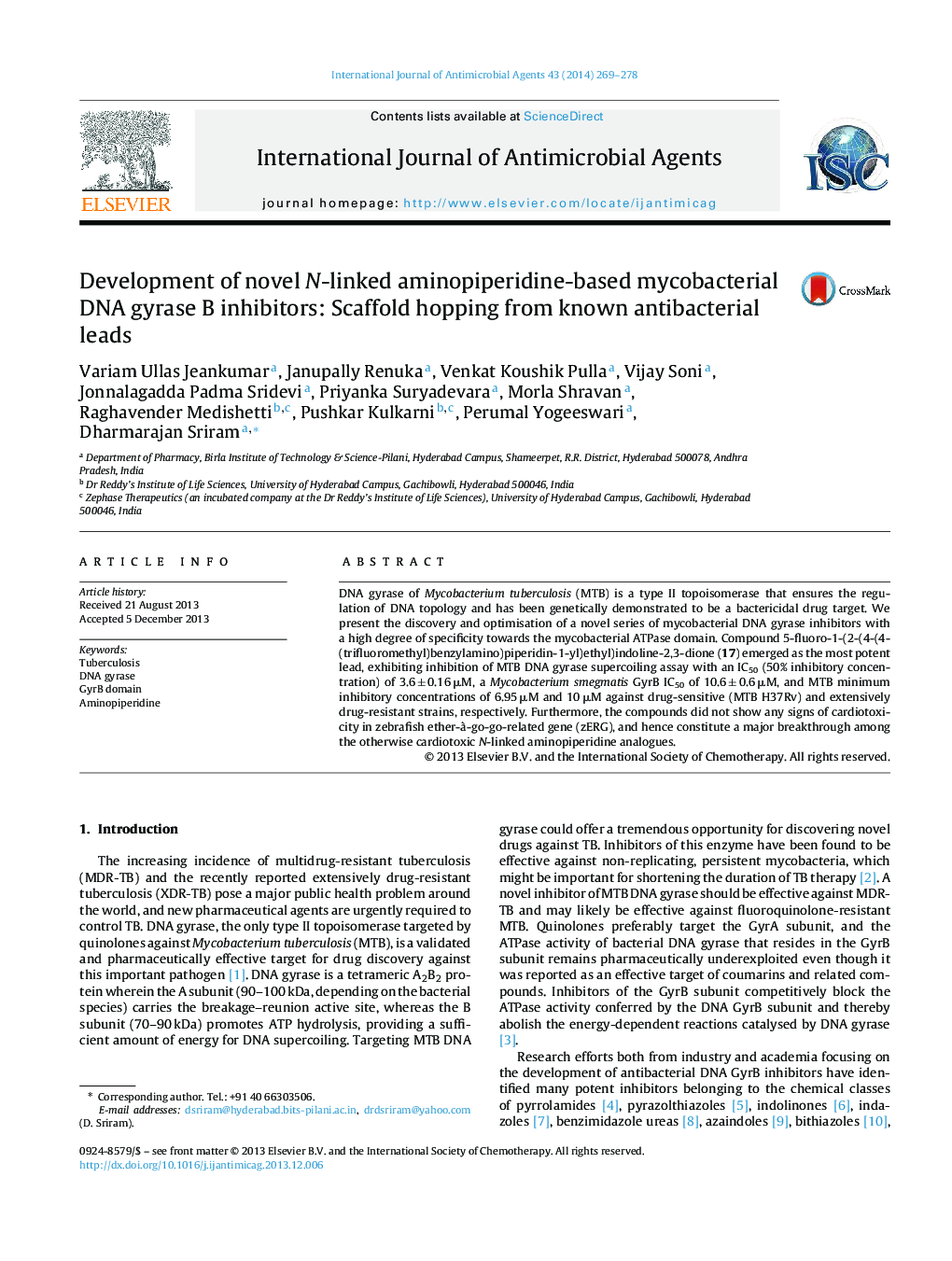| Article ID | Journal | Published Year | Pages | File Type |
|---|---|---|---|---|
| 3358822 | International Journal of Antimicrobial Agents | 2014 | 10 Pages |
DNA gyrase of Mycobacterium tuberculosis (MTB) is a type II topoisomerase that ensures the regulation of DNA topology and has been genetically demonstrated to be a bactericidal drug target. We present the discovery and optimisation of a novel series of mycobacterial DNA gyrase inhibitors with a high degree of specificity towards the mycobacterial ATPase domain. Compound 5-fluoro-1-(2-(4-(4-(trifluoromethyl)benzylamino)piperidin-1-yl)ethyl)indoline-2,3-dione (17) emerged as the most potent lead, exhibiting inhibition of MTB DNA gyrase supercoiling assay with an IC50 (50% inhibitory concentration) of 3.6 ± 0.16 μM, a Mycobacterium smegmatis GyrB IC50 of 10.6 ± 0.6 μM, and MTB minimum inhibitory concentrations of 6.95 μM and 10 μM against drug-sensitive (MTB H37Rv) and extensively drug-resistant strains, respectively. Furthermore, the compounds did not show any signs of cardiotoxicity in zebrafish ether-à-go-go-related gene (zERG), and hence constitute a major breakthrough among the otherwise cardiotoxic N-linked aminopiperidine analogues.
